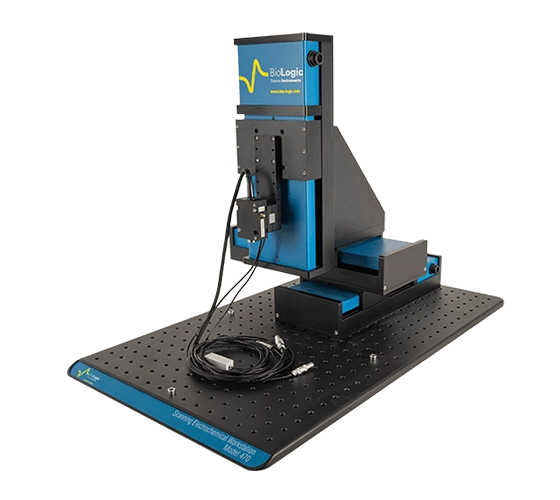Advanced Scanning Probe Electrochemistry Techniques
Unlock the microscopic secrets of electrochemical systems with the M470 from BioLogic. Unlike traditional bulk electrochemical measurements, scanning probe electrochemistry techniques allow for the visualization and understanding of localized electrochemical behaviors. With the M470, researchers can precisely correlate various sample features such as step edges and grain boundaries to their electrochemical responses, providing deeper insights into the observed bulk electrochemistry.
Comprehensive Electrochemical Investigation with M470
The M470 introduces an array of scanning probe electrochemistry techniques including SECM, ic-SECM, LEIS, SVET, SKP, SDC, and OSP. Its modular design affords researchers unparalleled flexibility, allowing the selection and combination of different modules to investigate surface activity, local impedance, potential, current, and topography. Tailored for a myriad of applications across corrosion research, biology, energy, and materials science, the M470 serves as an essential instrument for understanding and improving electrochemical systems.
Designed for Precision and Flexibility
As the fourth generation of scanning probe electrochemistry instruments from BioLogic, the M470 sets new standards in flexibility and precision. Its high-resolution, accurate scanning stage is optimized for electrochemistry measurements, reducing artifacts and ensuring repeatability. Researchers can expand their technique catalog dynamically with its modular nature and comprehensive software, supporting a fully customizable electrochemistry experience. The inclusion of over 40 discrete experiments alongside advanced data analysis capabilities underscores the M470’s role as a pivotal tool for electrochemical innovation.

